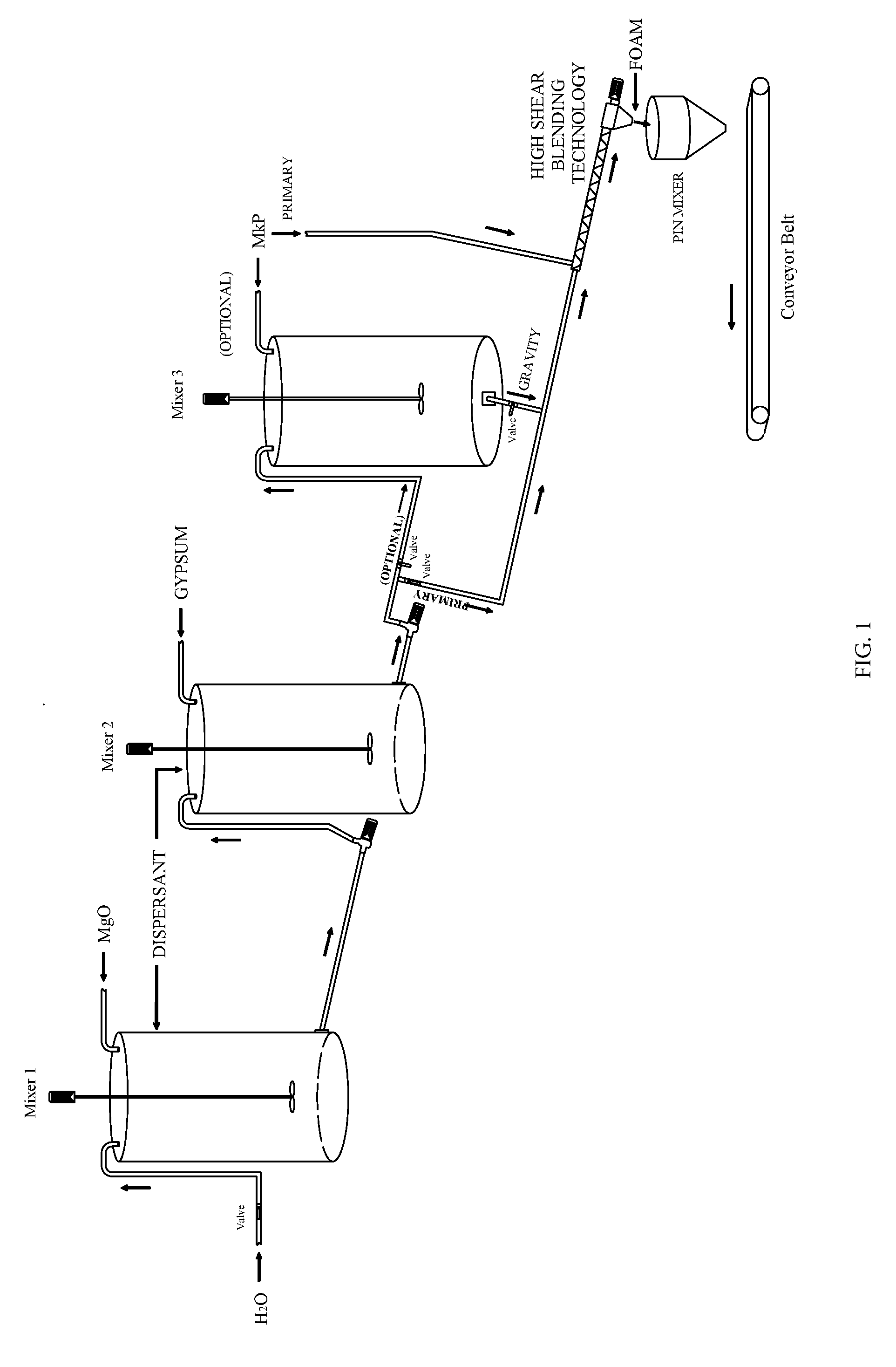Magnesium-based cements and slurry precursors for the same
a technology of magnesium oxide and magnesium oxide, which is applied in the direction of climate sustainability, solid waste management, sustainable waste treatment, etc., can solve the problems of inconsistent reaction between magnesium oxide components, difficult to achieve consistency and reproducibility, and inconvenient us
- Summary
- Abstract
- Description
- Claims
- Application Information
AI Technical Summary
Benefits of technology
Problems solved by technology
Method used
Image
Examples
example 2
[0064]In one embodiment, a Magnesium Silicate / Magnesium Phosphate hybrid cement (MSC / MPC) was produced based on the following:
[0065]30-60% silica fume
[0066]24-36% of a 60% Mg(OH)2 slurry
[0068]1-2% sodium hexametaphosphate
example 3
[0069]In one embodiment, a Magnesium OxyCloride (MOC) cement was produced based on the following composition:
[0070]31% of a 60% magnesium hydroxide slurry
[0071]19% of a Magnesium chloride hexahydrate flake
[0072]45% Sand
[0073]5% Metakaolin
[0074]There are many magnesium-based cement applications where the processes of the present disclosure can be beneficially applied. Example of such applications and use cases may include, but are not limited to, continuous and batch processes for making construction boards such as wall boards, floor boards, backer boards, ceiling tiles, siding products, roof products, etc. Additionally, methods and resultant magnesium-based cements according to the present disclosure may be used in connection with acid resistant protective coatings for construction boards, tunnels, sewer systems, etc. Methods, systems, and products consistent with the present disclosure may also be used in connection with 3-D printing applications, pool plaster and gunite / shotcrete ...
PUM
| Property | Measurement | Unit |
|---|---|---|
| Temperature | aaaaa | aaaaa |
| Temperature | aaaaa | aaaaa |
| Fraction | aaaaa | aaaaa |
Abstract
Description
Claims
Application Information
 Login to View More
Login to View More - R&D
- Intellectual Property
- Life Sciences
- Materials
- Tech Scout
- Unparalleled Data Quality
- Higher Quality Content
- 60% Fewer Hallucinations
Browse by: Latest US Patents, China's latest patents, Technical Efficacy Thesaurus, Application Domain, Technology Topic, Popular Technical Reports.
© 2025 PatSnap. All rights reserved.Legal|Privacy policy|Modern Slavery Act Transparency Statement|Sitemap|About US| Contact US: help@patsnap.com

